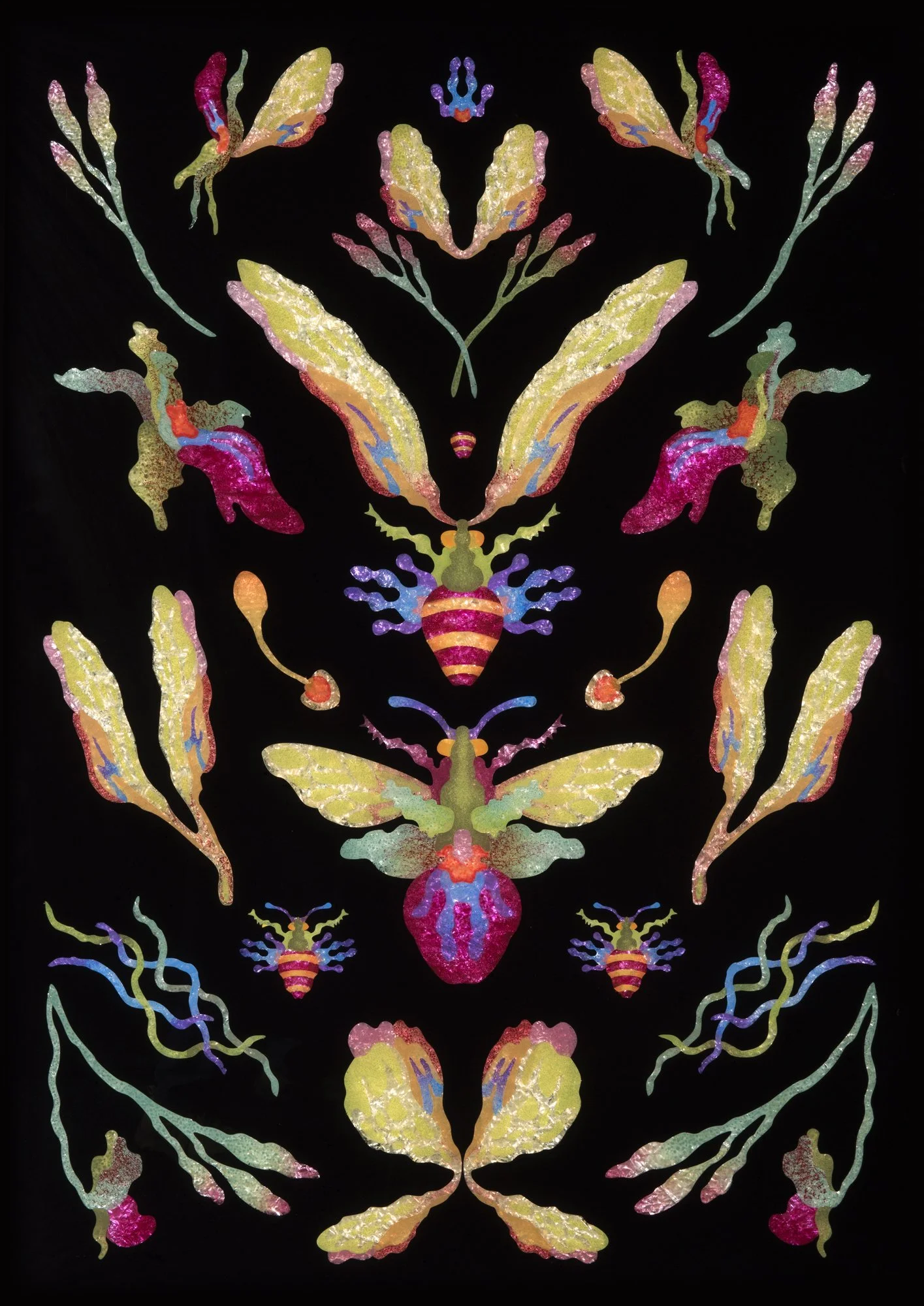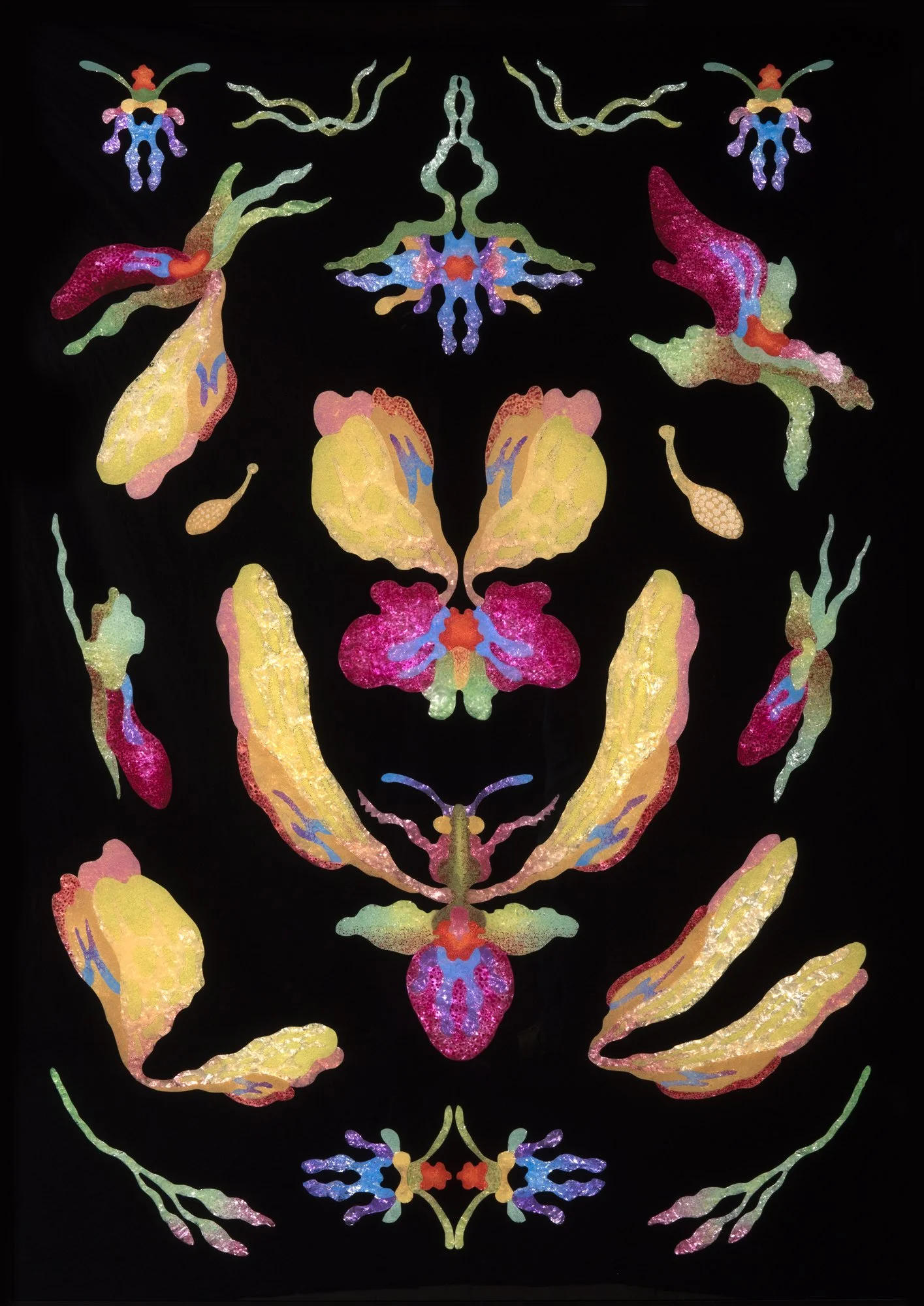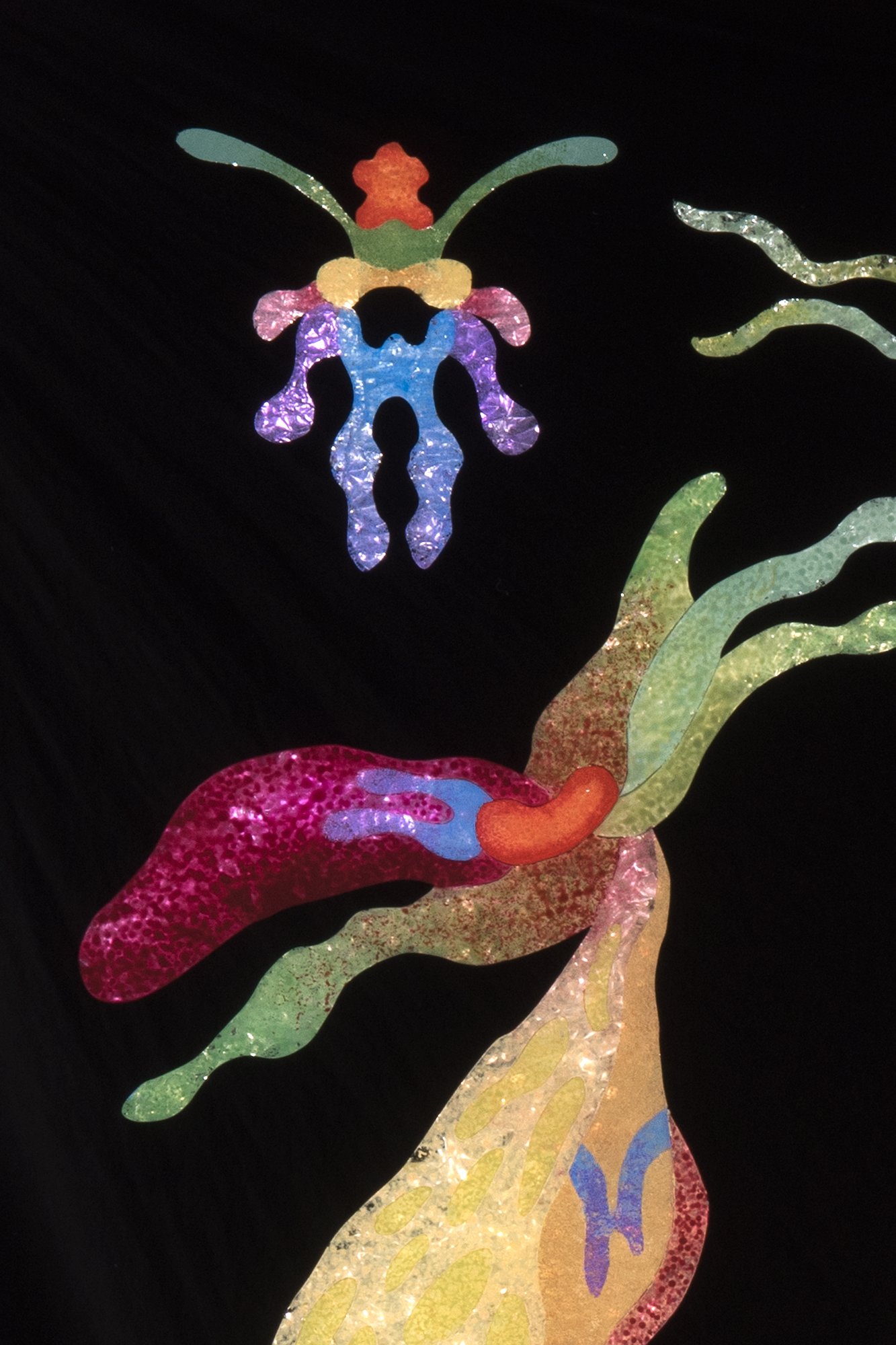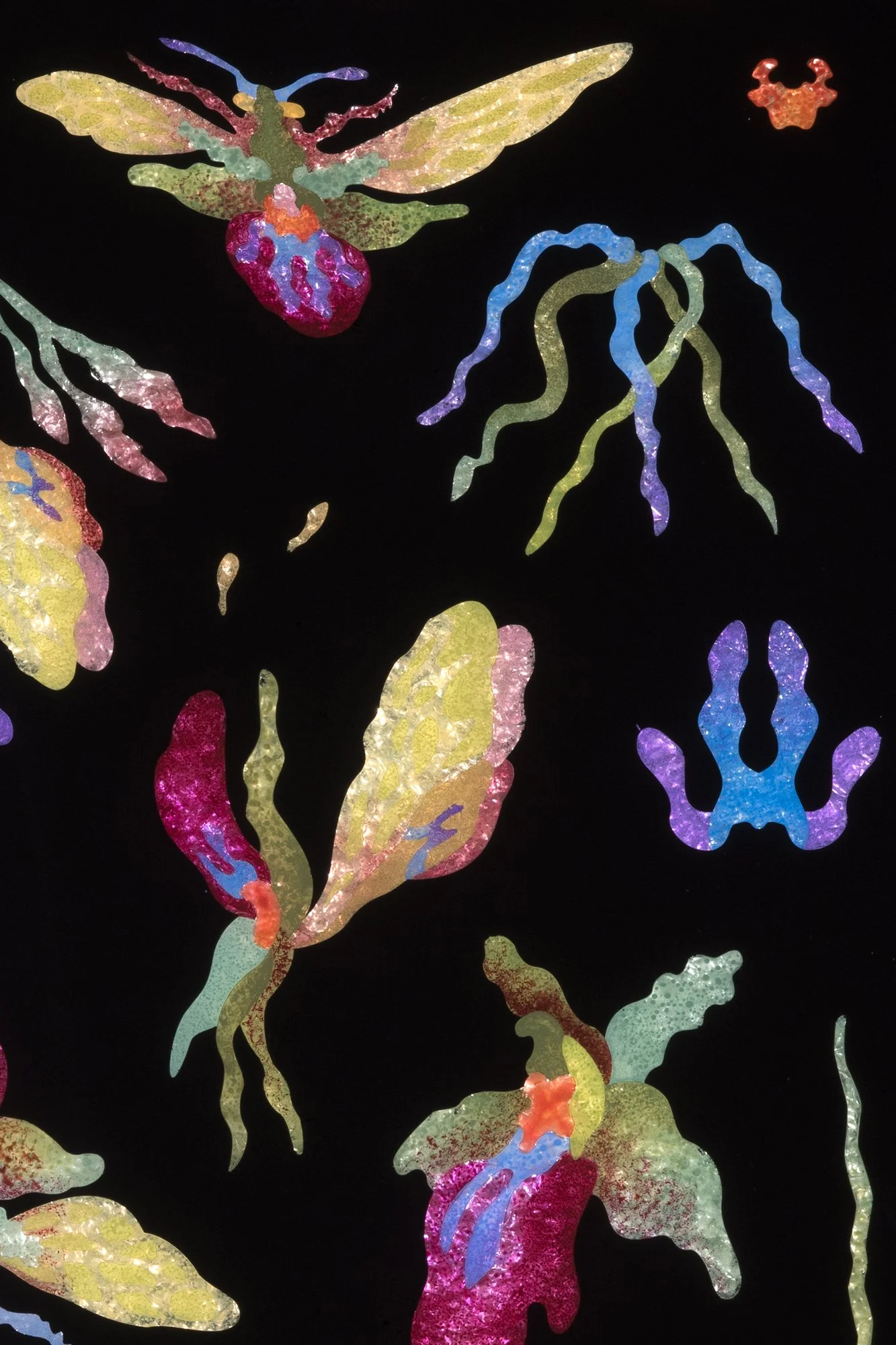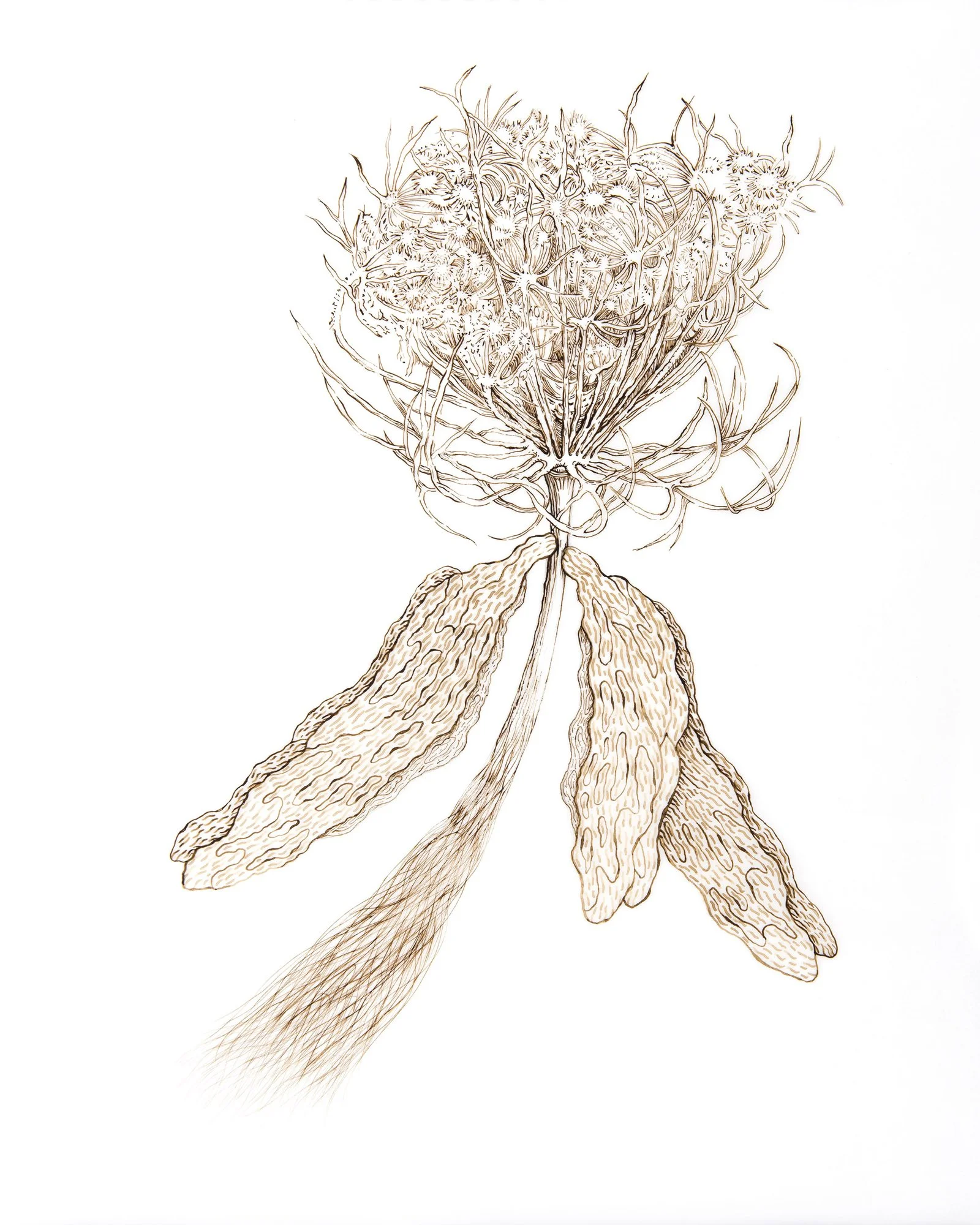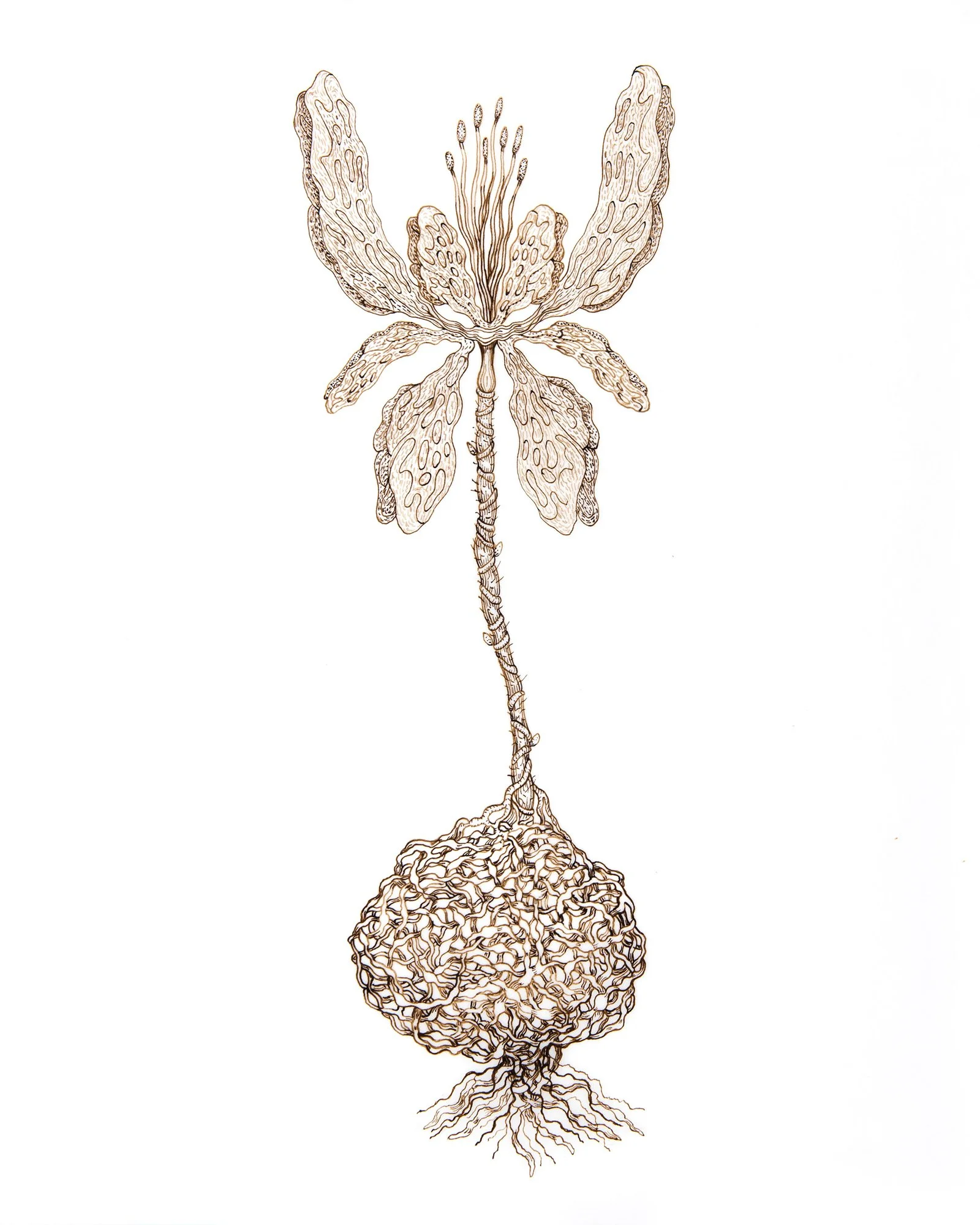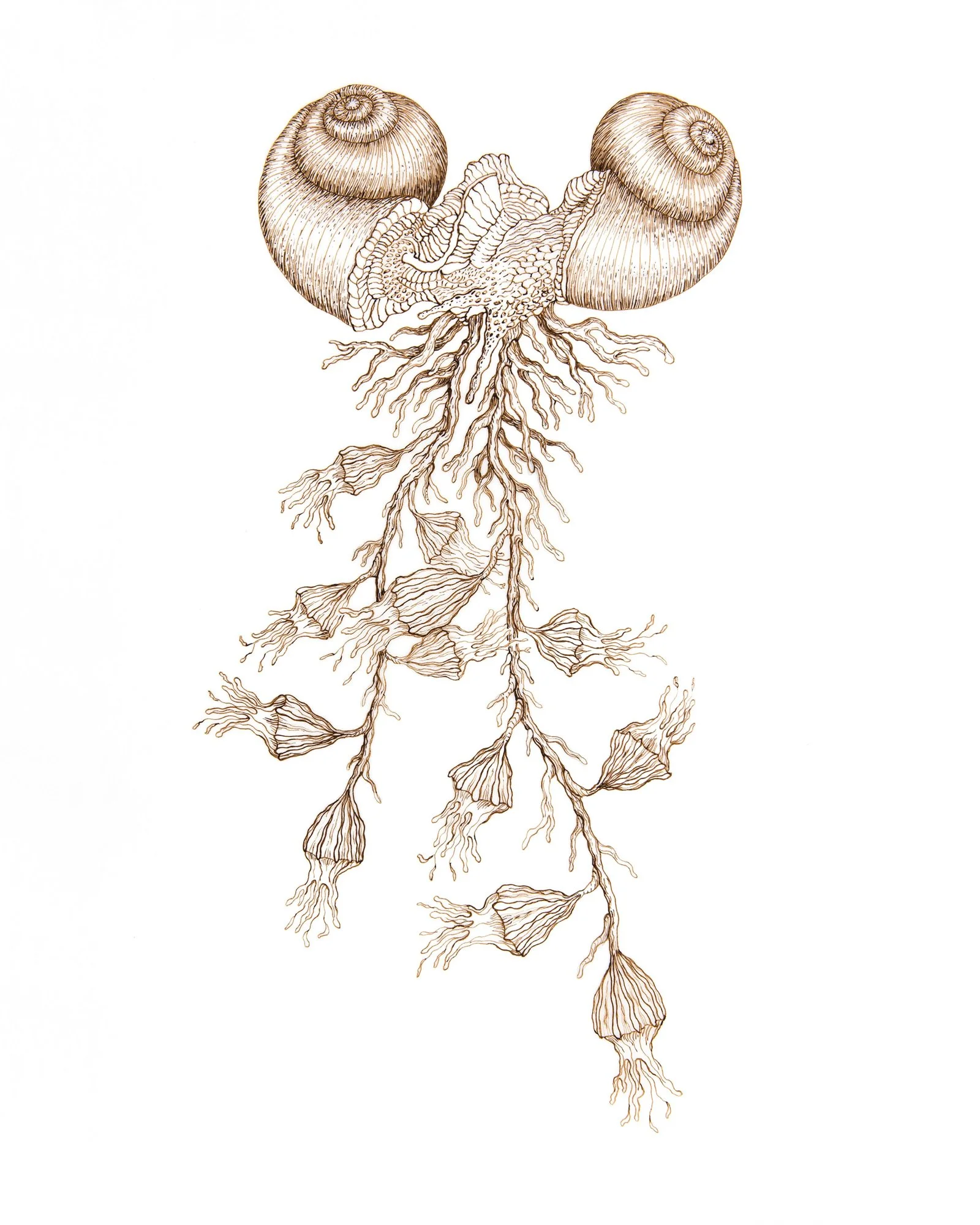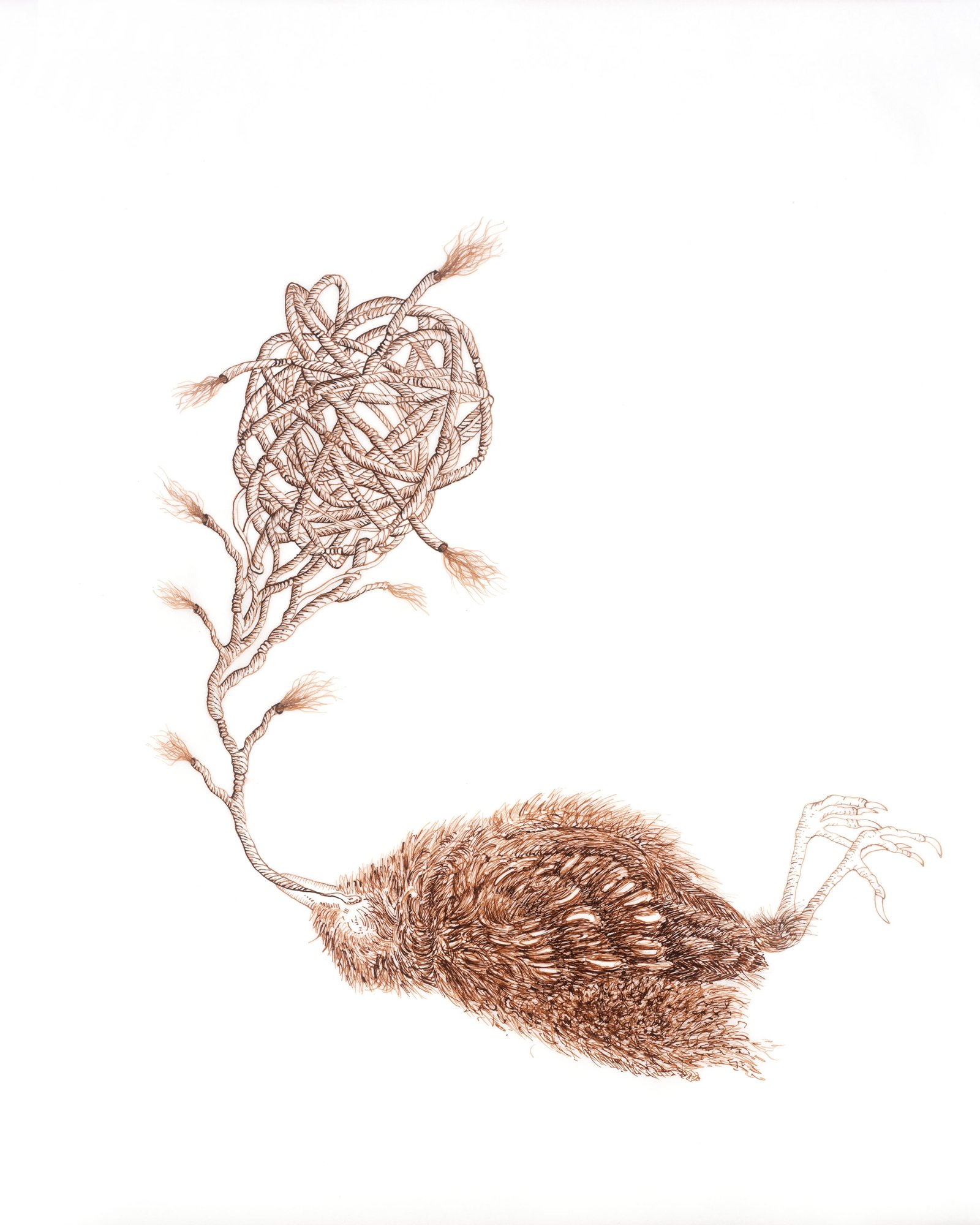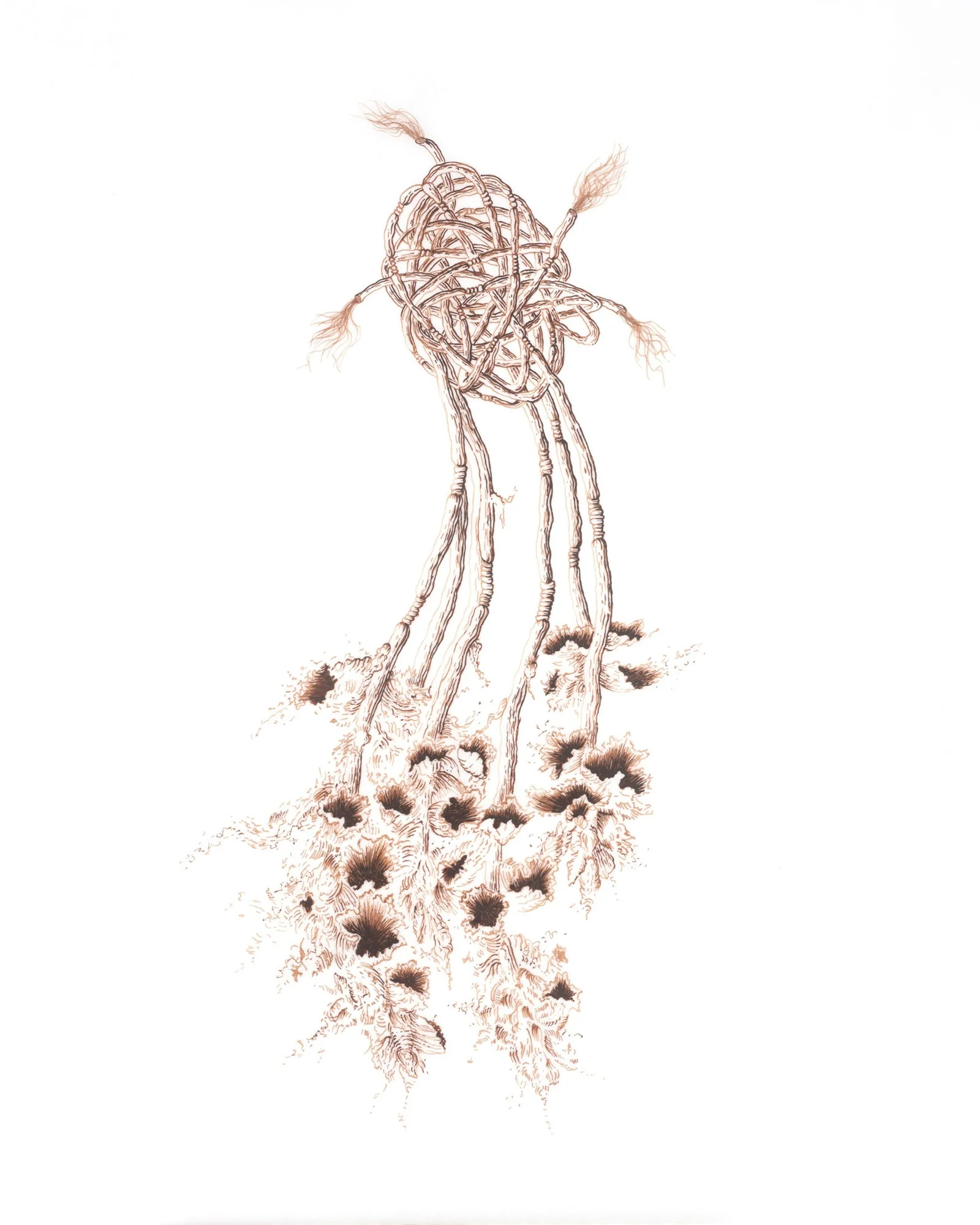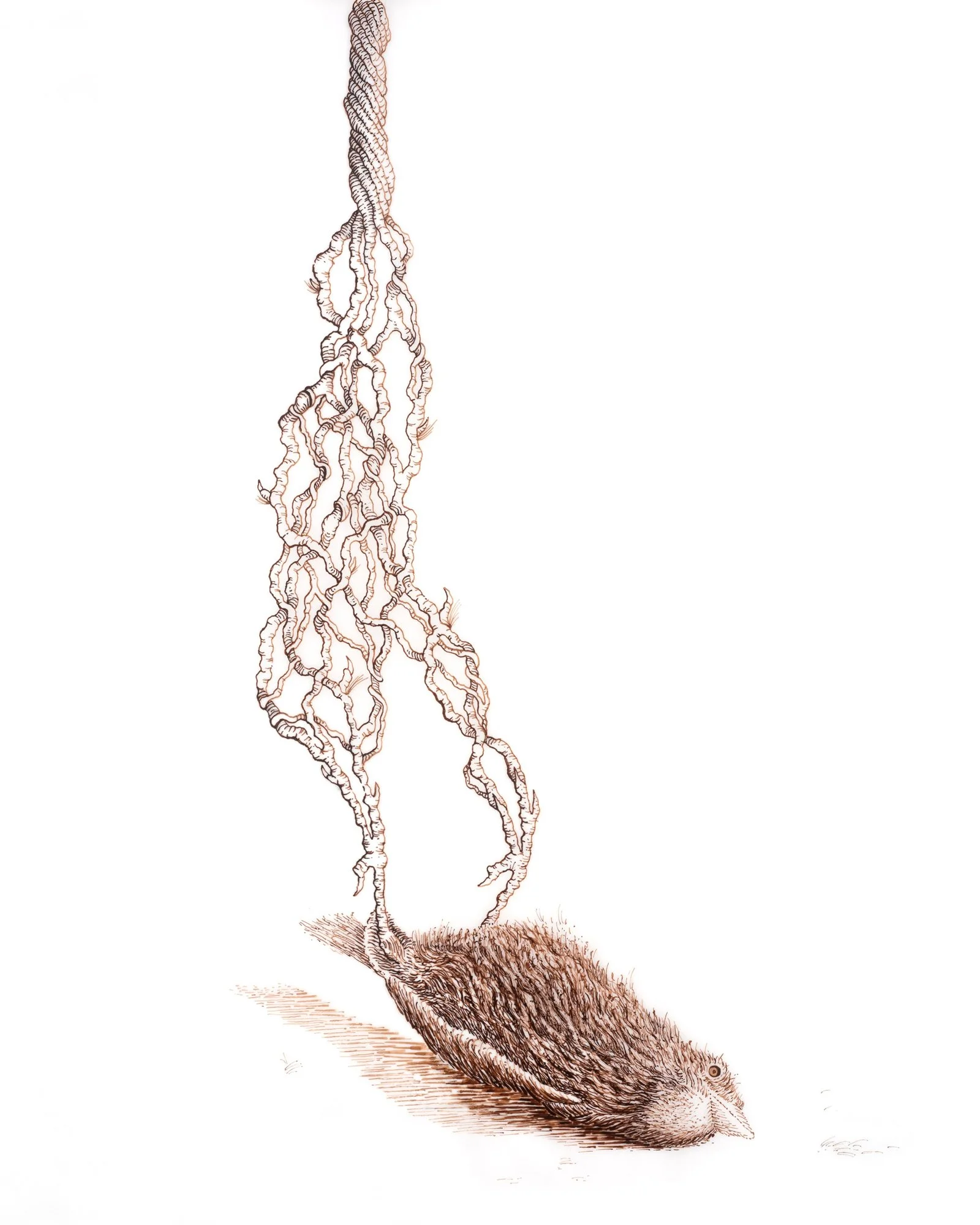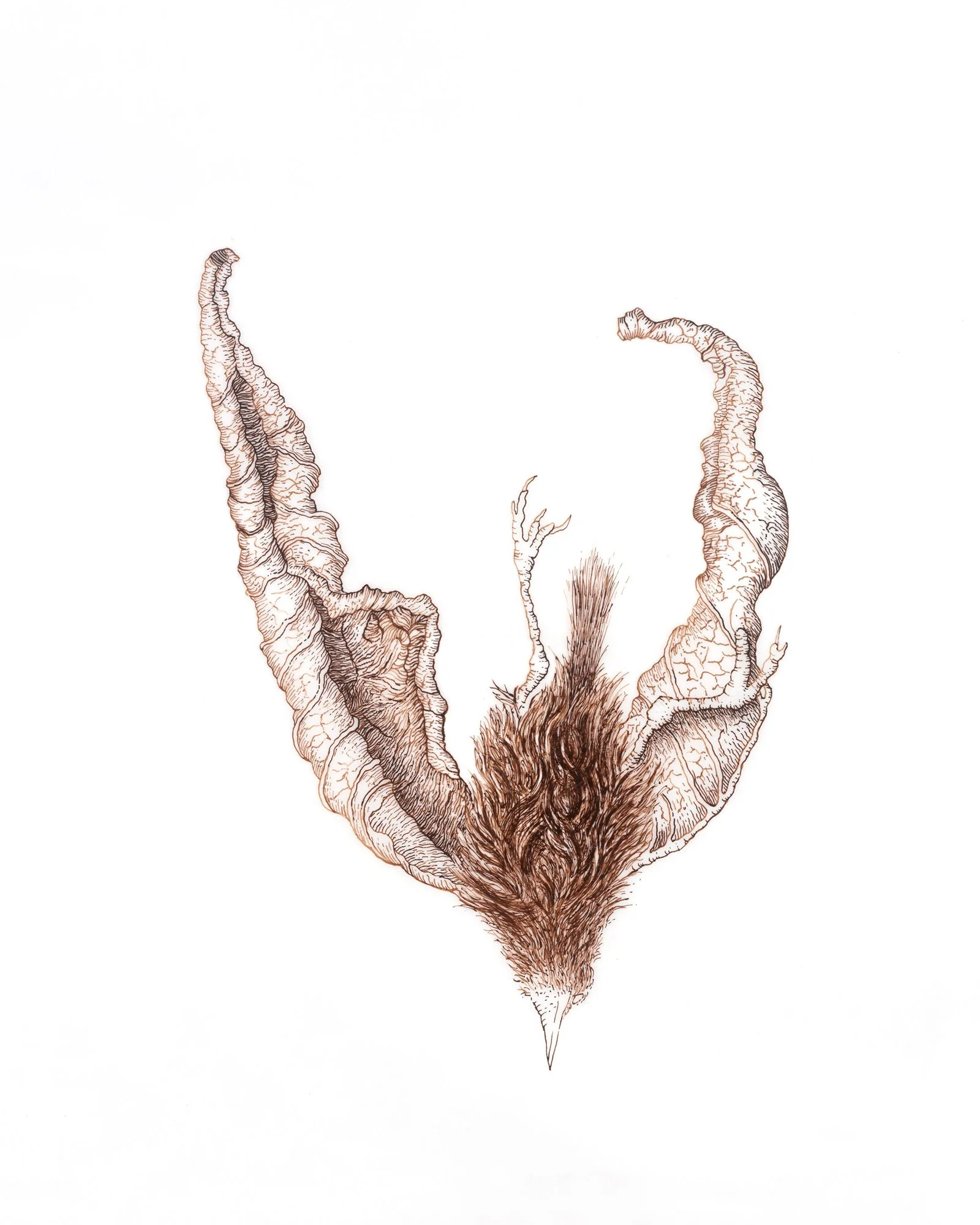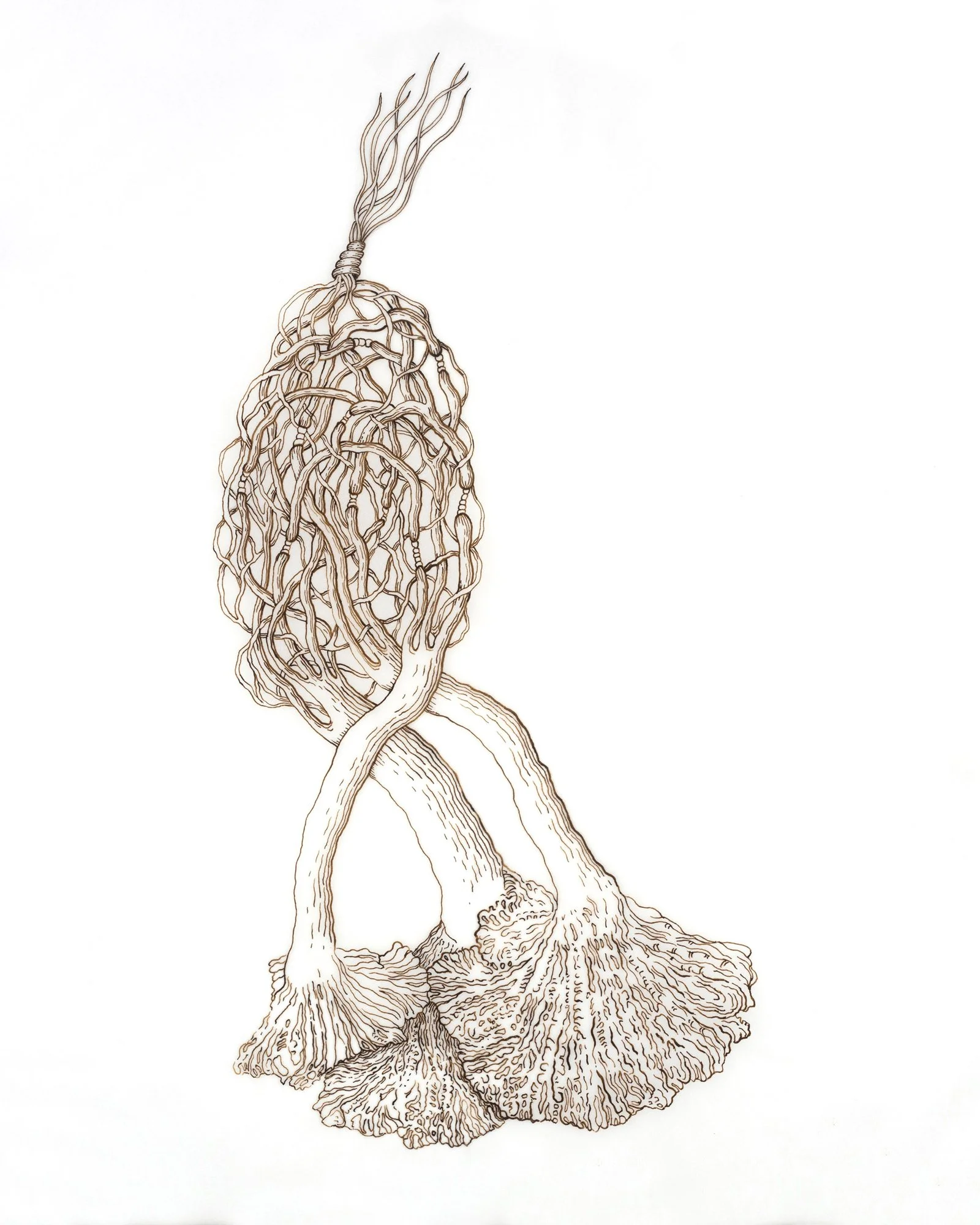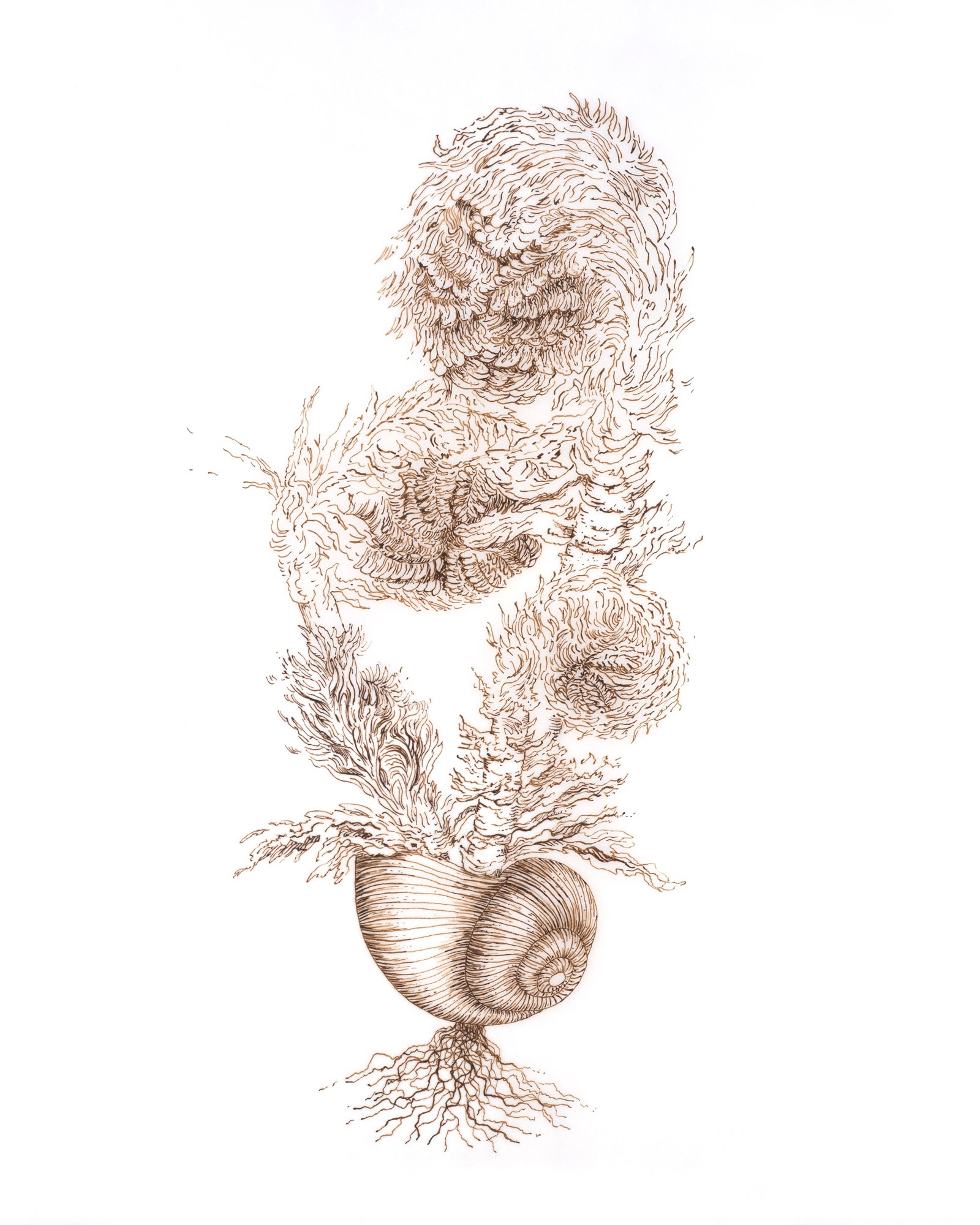Sync: Early Spider Orchids (2018)
Sync: Early Spider Orchids addresses the sensual/sexual relationship between the bee and the orchid flower resulting in hybrids of the two. The format is derived from late 1900s natural history educational charts that were designed to be seen from the back of the classroom. The reverse painting on glass with reflective foil is a nod to Victorian tinsel painting popular at that time, and also to our backlit digital devices which have replaced the classroom chart.
Orchids have a long history as sensual and sexual plants. The early spider orchids have been dependent on bees to pollinate them, but global warming has resulted in this relationship being ‘out of sync.’ Emitting a perfume-like the scent of the female bee, the orchids attract the male bees who try and copulate with them. When they discover that they are in fact not a female, the male moves on to another orchid, trying again to mate and inadvertently pollinating the successive orchids. As the climate warms the females come out of hibernation sooner than the orchid flower. The male bees mate with them and do not interact with the orchid, resulting in a lack of pollination.
"Sync: Early Spider Orchid I," 2018
Reverse painting on plexiglass, foil, artist's frame
48.5 x 36 x 1.5 / 123.2 x 91.4 x 3.8 cm
"Sync: Early Spider Orchid II," 2018
Reverse painting on plexiglass, foil, artist's frame
48.5 x 36 x 1.5 / 123.2 x 91.4 x 3.8 cm
"Sync: Early Spider Orchid III," 2018
Reverse painting on plexiglass, foil, artist's frame
48.5 x 36 x 1.5 / 123.2 x 91.4 x 3.8 cm
Detail of "Sync: Early Spider Orchid I", 2018
Detail of "Sync: Early Spider Orchid II", 2018
Detail of "Sync: Early Spider Orchid III," 2018
Adaptation (2018-19)
Adaptation was created while Samour was a Scholar-in-Residence at the Tufts European Center in Talloires, France. The drawings are based on direct observation of the exterior and interior structures of the plants of the Haute Savoie region as well as the artist’s visual interpretations of how these plants are changing and have the potential for extinction due to global warming. Drawn with a quill pen, they reference early natural history illustration. In these hybrids, the organic is over-laid and interchangeable with the technological and address some of the following questions: What are the visual and metaphorical overlays between optical and copper wires used in digital communication, and the function of the root hairs of a plant? What does the function of the bee to the flower and the human to digital transmission have in common in regard to regeneration and multiplicity? How does global warming cause plants and animals to adapt and what might that look like?
"Adaptation I," 2019
Ink on paper
17 x 14 in / 43.2 x 35.6 cm
"Adaptation II," 2019
Ink on paper
17 x 14 in / 43.2 x 35.6 cm
"Adaptation III," 2019
Ink on paper
17 x 14 in / 43.2 x 35.6 cm
"Adaptation IV," 2019
Ink on paper
17 x 14 in / 43.2 x 35.6 cm
"Adaptation V," 2019
Ink on paper
17 x 14 in / 43.2 x 35.6 cm
"Adaptation VI," 2019
Ink on paper
17 x 14 in / 43.2 x 35.6 cm
"Adaptation VII," 2019
Ink on paper
17 x 14 in / 43.2 x 35.6 cm
"Adaptation VIII," 2019
Ink on paper
17 x 14 in / 43.2 x 35.6 cm
"Adaptation IX," 2019
Ink on paper
17 x 14 in / 43.2 x 35.6 cm
"Adaptation X," 2019
Ink on paper
17 x 14 in / 43.2 x 35.6 cm
"Adaptation XI," 2019
Ink on paper
17 x 14 in / 43.2 x 35.6 cm
"Adaptation XII," 2019
Ink on paper
17 x 14 in / 43.2 x 35.6 cm
